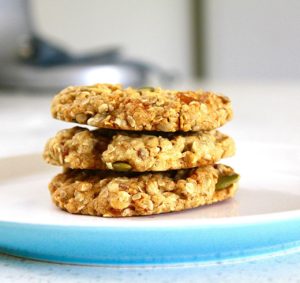Best Recipes for Lactation
“What are the best recipes for lactation?” Inquiring minds want to know! Our team at The Jax Baby Company works closely in homes with families in a postpartum setting and this is one of the most asked questions. We decided to kick out a blog that’ll cover recipes that our clients L-O-V-E! You can skip ahead straight to the printable recipe or you can squeeze in a quick 2-minute read for a little 4-1-1 on lactation!
Lactation, in the beginning, is driven by the hormones.
In the first few days after giving birth to your baby and finally your placenta your body experiences a drop in hormones like progesterone and estrogen and an increase in prolactin. This cues milk production and happens even if the birthing person isn’t breastfeeding the baby.
After the hormonal response lactation is driven by milk being removed from the breasts. I like to use the phrase, “breastmilk more or less is primarily made at the breast!”
What does that mean? That means that removing milk from the breasts often and completely each time will help increase lactation (supply). Likewise removing milk from the breasts less frequently and not completely emptying the breasts will help to decrease lactation (supply).
I feel an ethical responsibility to mention that there are times when hormonal imbalances or problems occur and breastmilk production can most definitely be impacted. This doesn’t happen to every person or even most people. It can be different for each baby and lactating mother. This doesn’t mean you’ve done anything wrong. This does not determine if you are a good parent or not.
Best Recipes for Lactation
Begin with a healthy understanding. For some people breastfeeding comes fairly easily, but for most people, it takes a lot of work. Like a whole L-O-T of work! Be realistic in your expectations and set yourself up for the best chances at success, as defined by you!
Recipe for Success by The Jax Baby Company
First, read up on infant feeding! I recommend these books: Breastfeeding Made Simple: Seven Natural Laws for Nursing Mothers by Nancy Mohrbacher, Guilt-free Bottle Feeding: Why your formula-fed baby can be happy, healthy and smart Kindle Edition by
Next, create a solid postpartum plan. Each of our postpartum clients receives a very detailed postpartum plan. Be sure if you’re planning on your own you consider all the things; siblings, meals, sleep, and mental and emotional health to name a few things.
Also, an “optional”, but super beneficial ingredient is a postpartum & infant care specialist. I highly recommend having them start with your family within the first few days after birth. Ideally, our team meets the families we work with at home the day after they come home, sometimes the same day to assist them in getting home and settled in.
Last key ingredient is to see an IBCLC during your hospital stay. Contact an IBCLC right away at first signs of trouble or concerns, don’t wait it out and see if it gets better. Pain while nursing or soreness beyond the initial latch, weight gains, and not enough wet or dirty diapers are all reasons to call.
The above mentioned is the very best recipe for lactation success, but we have one more recipe that is our clients’ all-time favorite!
Lactation & Energy Bites
Ingredients:
2 cup rolled oats
7 tbsp. brewers yeast (Solgar is my preferred brand)
1 cup crunchy peanut butter
2/3 cup honey
1 tsp. vanilla extract
2 tsp. maple syrup
2 tsp coconut oil
1/4 cup ground flax (totally optional)
1/8 cup of chia seeds
3/4 cup mini semi-sweet chocolate chips
Directions:
Start by combining and mixing thoroughly honey, maple syrup, coconut oil, vanilla extract, and crunchy peanut butter in a large mixing bowl.
Next, in a separate, larger bowl combine and mix together the flax, chocolate chips, oats and brewer’s yeast.
Once combined add your wet ingredients to your larger bowl of dry ingredients and thoroughly mix all ingredients together. This step takes the longest and requires some elbow grease!
